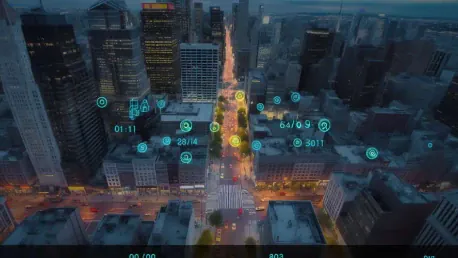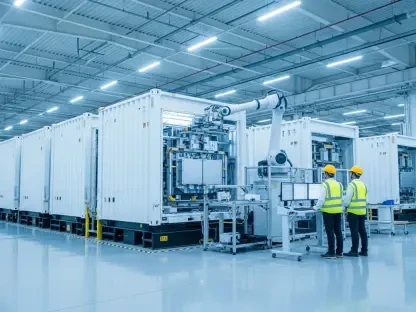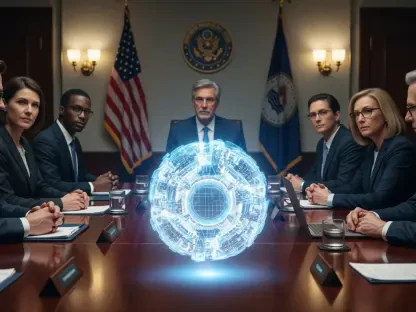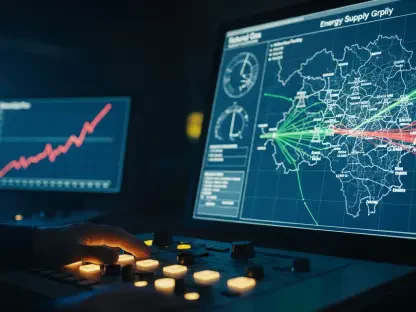The electric utility industry is undergoing a significant transformation, driven by the need for perfect reliability and the integration of new technologies. OATI (Open Access Technology International, Inc.) has been at the forefront of this change, leveraging trust and technological innovation to modernize the grid. This article explores the challenges and developments within the industry, highlighting OATI’s role in advancing grid modernization.
The Imperative of Reliability in the Electric Utility Industry
Zero-Margin-for-Error Nature of the Sector
Electric utilities are unique in their requirement for perfect reliability. Unlike other industries, a failure in the electrical grid can pose a threat to human life, underscoring the zero-margin-for-error nature of this sector. This critical responsibility has historically granted utilities exemptions from monopoly laws, distinguishing their operational frameworks from other industries. When it comes to providing electricity, minor disruptions can lead to major consequences, including safety hazards, economic losses, and societal impacts. This stringent need for continuous, reliable power has shaped how utilities operate and invest in infrastructure and technology.
The nature of the electrical grid requires seamless performance. Whenever there’s a power outage, the implications go beyond mere inconvenience; hospitals, emergency services, and countless essential systems depend on uninterrupted power. As a result, electric utilities must go beyond industry standards to ensure reliability and resilience. This zero-margin-for-error demand not only affects operational strategies but also influences long-term planning and investments. Utilities continuously seek new technologies and methodologies to maintain and enhance grid reliability, ensuring they can meet the evolving demands and complexities of modern energy usage.
The Role of OATI in Ensuring Reliability
OATI has grown from its origins in bulk power system energy markets to being a leader in advanced distribution software. Their flagship offering, the distributed energy resource management system (DERMS), is instrumental for utilities grappling with a rapidly changing power landscape. This system helps utilities maintain reliability while integrating new technologies and distributed energy resources (DERs). DERMS provides a comprehensive solution, allowing utilities to effectively manage the growing diversity and decentralization of energy resources, including solar panels, wind turbines, and battery storage systems.
DERMS exhibits advanced functionalities that optimize grid operations, support demand response, and enhance situational awareness. With the increase in renewable energy sources and the complexity brought about by modern energy grids, DERMS stands as a cornerstone in ensuring system resilience and reliability. It allows for real-time monitoring, predictive analytics, and efficient coordination of distributed resources, thereby preventing potential disruptions and enhancing overall grid performance. By implementing DERMS, utilities can confidently adapt to the energy landscape’s dynamic changes while maintaining an unwavering commitment to reliability.
Building Trust in the Utility Sector
Long-Term Stability and Reliability
Trust is a fundamental theme emphasized by Sasan Mokhtari, president and CEO of OATI. Unlike many software companies driven by short-term gains, OATI focuses on long-term stability, loyalty, and reliability. These qualities are highly valued by utility leaders, as trust is something earned over time and is pivotal in an industry where failure is not an option. Building trust in this high-stakes environment requires a consistent track record of delivering dependable solutions that meet stringent reliability standards. OATI’s emphasis on these values positions them as a trustworthy partner for utilities striving to uphold their critical service obligations.
OATI’s commitment to stability and reliability is reflected in its approach to product development and customer engagement. The company prioritizes rigorous testing, quality assurance, and continuous improvement to ensure that its solutions are robust and dependable. This dedication to excellence fosters long-lasting relationships with utilities, who depend on OATI’s technology to maintain seamless operations. Trust within the utility sector isn’t just about reliable software; it encompasses a broader commitment to understanding and addressing the specific needs and challenges of the industry. OATI’s philosophy of trust extends beyond products to encompass all aspects of their business, ensuring a holistic and reliable partnership.
Customer-First Philosophy
OATI’s commitment to treating their company as an extension of their customers has fostered enduring relationships. This customer-first philosophy ensures that clients see OATI as partners dedicated to long-term solutions rather than quick fixes. Building trust was crucial during the digital transition, and OATI prioritized creating reliable products, allowing their reputation to grow organically. By implementing a customer-first approach, OATI establishes strong rapport and loyalty with their clients, reinforcing the trust that is crucial in the utility sector. This approach involves active listening, understanding specific client challenges, and providing tailored solutions that meet their unique needs.
OATI’s dedication to customer success doesn’t end at product delivery. The company offers ongoing support, training, and consultation to ensure that utilities can fully leverage their solutions’ benefits. By treating customer satisfaction as a primary objective, OATI enhances its credibility and becomes an integral part of its clients’ success stories. This enduring partnership model helps utilities navigate the complexities of modern grid management with confidence, knowing they have a reliable ally in OATI. In an industry where trust and reliability are paramount, OATI’s customer-centric approach stands out as a key factor in their sustained success and influence.
Technological Transformation of the Grid
From Analog to Digital
The transformation of the grid from analog to digital has been a significant development in the industry. Mokhtari recalls the initial resistance to digital technology within the industry—a change that OATI embraced early on. When cloud infrastructure was an alien concept to utilities, OATI pioneered the suggestion of offsite data management for energy trading and financial services, an idea that has now become standard practice. This forward-thinking approach allowed OATI to become a trailblazer in digital transformation, leading the way in modernizing an industry traditionally resistant to change.
Embracing digital technology provided utilities with enhanced capabilities for data analysis, real-time monitoring, and streamlined operations. The transition from analog to digital has been driven by the need for greater efficiency, accuracy, and responsiveness in grid management. Digital technologies, such as cloud computing, advanced metering infrastructure, and artificial intelligence, have revolutionized how utilities operate, enabling more proactive and informed decision-making. OATI’s early adoption of these innovations positioned them as leaders in the digital revolution, equipping utilities with the tools needed to manage modern energy demands effectively.
Integration of New Technologies
Reliability of the grid hinges on the seamless integration of technological innovations and an intrinsic understanding of power systems. Mokhtari stresses that without a solid engineering foundation, new technologies like DERs and AI-driven analytics will flounder. This principle underpins the design of OATI’s Enterprise DERMS platform, intended to streamline utility operations through a unified system. By integrating diverse energy resources and advanced analytics, the DERMS platform enhances grid reliability, efficiency, and resilience, enabling utilities to handle increasing complexities and variabilities in energy supply and demand.
The Enterprise DERMS platform offers a centralized interface for managing distributed energy resources, enabling utilities to optimize their operations and ensure reliability. Through real-time data analytics, predictive modeling, and automated controls, DERMS supports informed decision-making and efficient resource allocation. Mokhtari’s emphasis on engineering excellence ensures that these technological advancements are not only innovative but also practical and reliable. The seamless integration of DERs into the grid, managed through a robust DERMS platform, positions utilities to effectively meet the challenges of modern energy systems and maintain a high standard of reliability and service.
The Role of Leadership in Grid Modernization
Sasan Mokhtari’s Unique Perspective
Sasan Mokhtari’s background as a technologist and engineer, recognized as an IEEE “Life Fellow,” positions him uniquely to lead OATI. His technical acumen allows him to grasp and convey complex aspects of their products without delegation to junior staff, an uncommon trait in the C-Suite often filled by financial or business management experts. This deep understanding positions OATI as a key player in integrating innovative solutions with operational realities. Mokhtari’s hands-on approach ensures that OATI’s offerings are not only cutting-edge but also grounded in practical utility needs, facilitating smoother implementation and greater trust among clients.
Mokhtari’s expertise enables him to lead OATI with a clear vision for modernizing the grid through trust and technology. His background allows him to navigate the intricate relationships between software innovation and utility operations, ensuring that OATI’s solutions effectively address the sector’s unique challenges. This unique perspective fosters a culture of technical excellence and customer-centricity at OATI, driving the company’s commitment to developing reliable, robust, and innovative technologies tailored to the specific needs of the utility industry. Mokhtari’s leadership exemplifies the integration of deep technical knowledge with strategic vision, empowering OATI to continue leading the charge in grid modernization.
Vision for the Future
Mokhtari acknowledges the formidable challenges facing the industry, such as managing grid complexity, accelerating clean energy adoption, and ensuring reliability amidst these dynamic shifts. However, he expresses optimism, commending utilities for their remarkable adaptability and progress. He believes that no other group could manage the rapid advancements currently being witnessed in the sector. Mokhtari’s future vision includes further leveraging technological innovations to enhance grid resilience, efficiency, and sustainability, ensuring that utilities can keep pace with evolving energy demands while maintaining reliability.
To achieve this vision, OATI continues to invest in research and development, exploring new technologies and solutions that can further modernize the grid. Mokhtari highlights the importance of collaboration between technology providers, utilities, and regulatory bodies to foster innovation and support seamless integration of new energy solutions. By fostering a collaborative ecosystem, OATI aims to drive the industry forward, ensuring that utilities have the tools and knowledge needed to navigate the complexities of modern energy systems. Mokhtari’s optimism and forward-looking approach underscore OATI’s commitment to shaping a future where advanced technologies and trusted partnerships empower utilities to achieve unprecedented levels of reliability and sustainability.
Conclusion
The electric utility industry is experiencing a significant transformation due to the necessity for perfect reliability and the incorporation of new technologies. At the forefront of this evolution is OATI (Open Access Technology International, Inc.), which has been instrumental in driving these changes. OATI leverages innovation and trust to modernize the grid, ensuring it meets contemporary demands. This article delves into the various challenges and advancements within the industry while underscoring OATI’s pivotal role in leading grid modernization efforts. This transformation is crucial for accommodating emerging technologies, enhancing grid reliability, and addressing the ever-growing energy demands. OATI’s initiatives help to streamline grid operations, integrate renewable energy sources, and improve overall efficiency. Through strategic technological advancements, they are prepared to shape the future of the electric utility sector. The story of OATI is one of adaptive prowess, essential for ushering in a new era marked by modernized energy infrastructure and enhanced service reliability.









